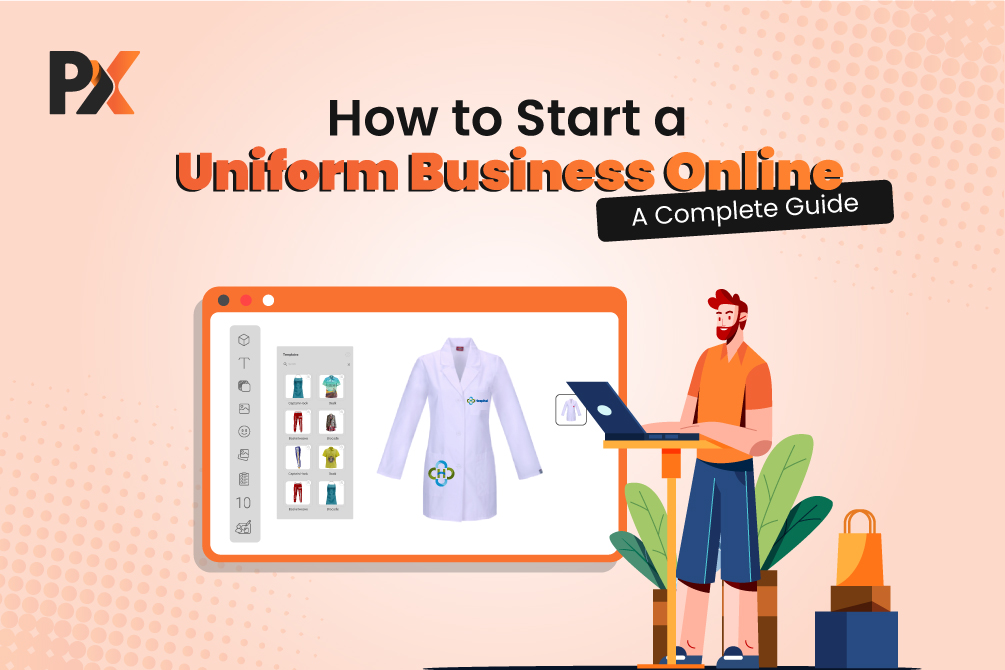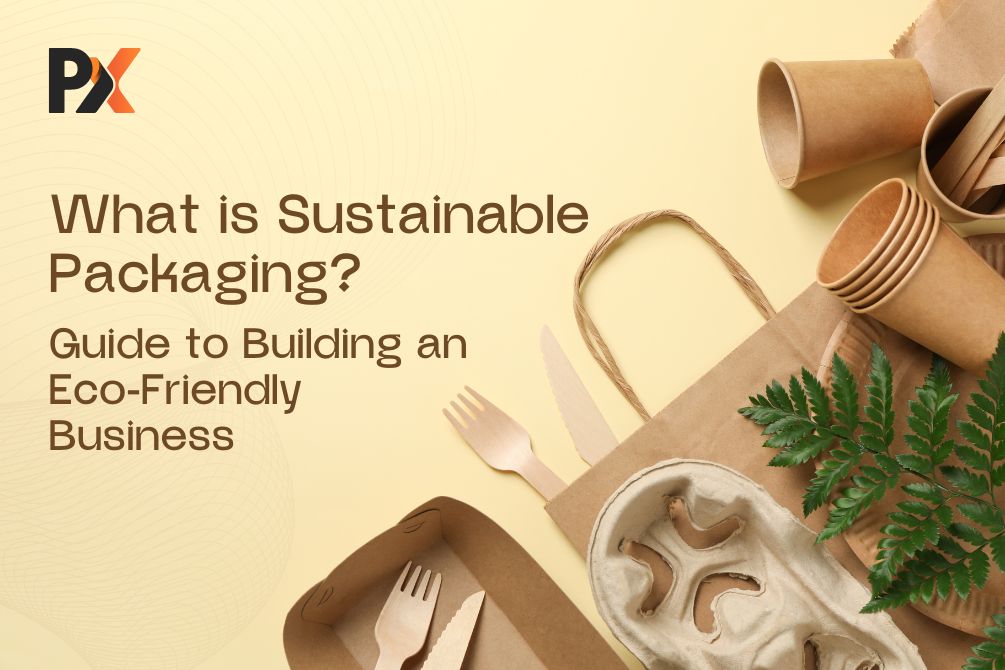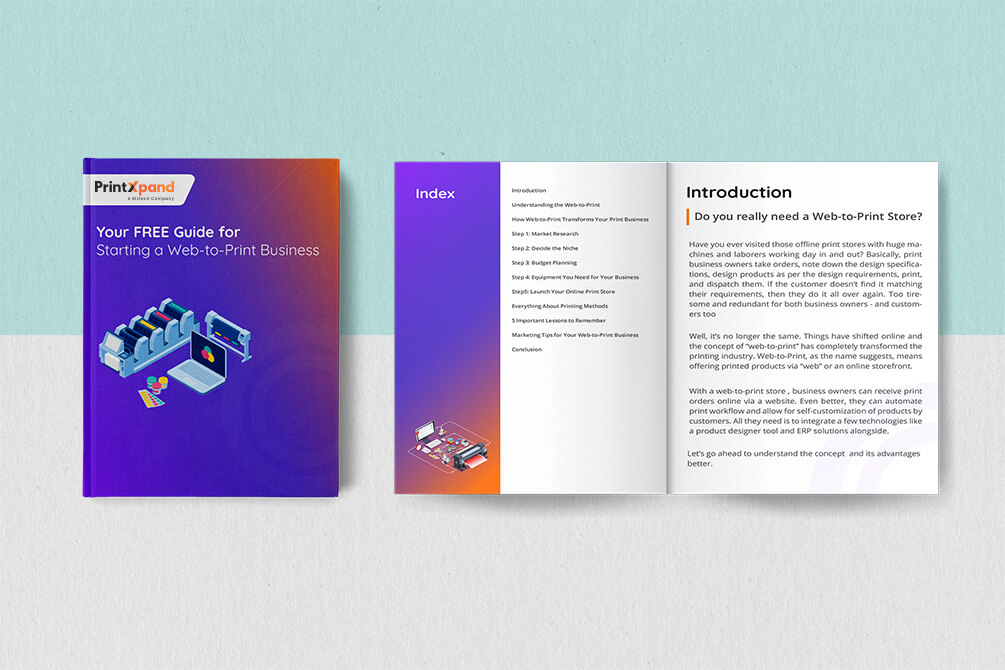Summary
Are you running a packaging business?
I am sure you have heard about Packlane.
But do you know how they became a leading player in the packaging industry?
So, it all started with Miriam Brafman, founder of Packlane, searching for customized shipping boxes for her products.
But not being able to find a vendor offering the same!
This is when she saw a gap in the market and a demand for custom packaging.
And decided to start Packlane.
Packlane soon became the talk of the town with their user-friendly website, where brands of all sizes can design and order personalized shipping and mailer boxes.
Pretty cool, right?
Fast forward to today: Packlane has become the go-to solution for many big players like Red Bull, Shopify, HP, and more.
So, if you’re looking to achieve something similar in the packaging industry, you’re in the right place.
In this blog, I’ll talk about the drawbacks of traditional approaches for custom box printing and introduce you to box design software, with the help of which you can offer customization options just like Packlane.
And to make sure you stay ahead of the game, I’ll also guide you through the latest trends and innovations shaping the packaging industry.
Let’s dive in.
Challenges of Box Customization Businesses: Overcoming Limitations in Traditional Methods
Traditional methods of box customization involved manual design creation and sometimes outsourcing of services.
However, these methods came with several limitations and hindered efficiency and cost-effectiveness.
A. Limitations of Traditional Box Customization Methods
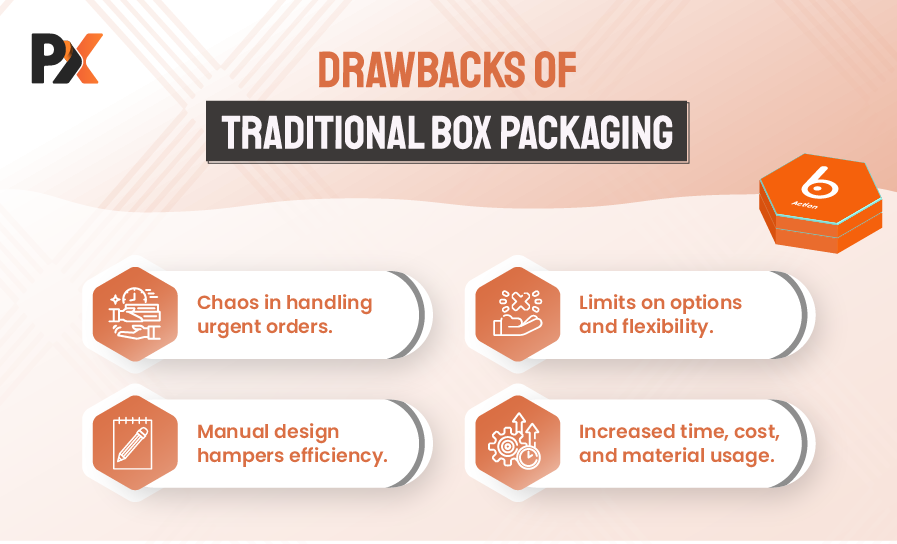
- Time-Consuming Processes: Designing boxes manually can be time-consuming, leading to delays in fulfilling orders and meeting deadlines.
- Difficulty in Handling Urgent Orders: Without automation, accommodating last-minute or urgent orders becomes challenging due to the time required for preparation, setup, and manual processes. This limitation can result in missed opportunities and dissatisfied customers.
- Minimum Quantity Constraints:Imposing minimum quantity requirements for box orders can pose challenges for buyers with specific needs or budget constraints, limiting their options.
- Resource-Intensive Processes: Manual design without streamlined processes requires more resources, including physical materials, skilled labor, and manual inventory management. Efficient resource management becomes complex and increases costs for businesses.
However, these challenges can be easily overcome with the latest technology and by keeping your business updated.
Innovative solutions have the power to transform your processes into a less manual and more streamlined workflow.
This, in turn, offers several advantages:
Improve time efficiency in box customization processes.
- Improve time efficiency in box customization processes.
- Achieve cost-effectiveness by reducing reliance on expensive setups.
- Provide flexibility to handle variable order quantities and unique customer requirements.
- Enhance collaboration and communication among teams, customers, and suppliers.
- Elevate the customer experience through interactive design tools and personalized customization options.
- Automate processes, reducing manual errors and optimizing resource utilization.
Upgrade your business with a streamlined, less manual workflow using Print Xpand, a web-to-print
ERP solution. Watch the below video to understand how it can revolutionize your workflow and drive growth.
Curious to learn more about Web-to-Print ERP Solution
How Can Box Design Software Help?
Are your customers coming to you and verbally specifying their requirements, only for you to manually print them?
This outdated approach can lead to dissatisfied customers and longer turnaround times.
But there’s a solution that can transform your customization process: box-making software.
With this, you can empower your buyers to customize their own boxes.
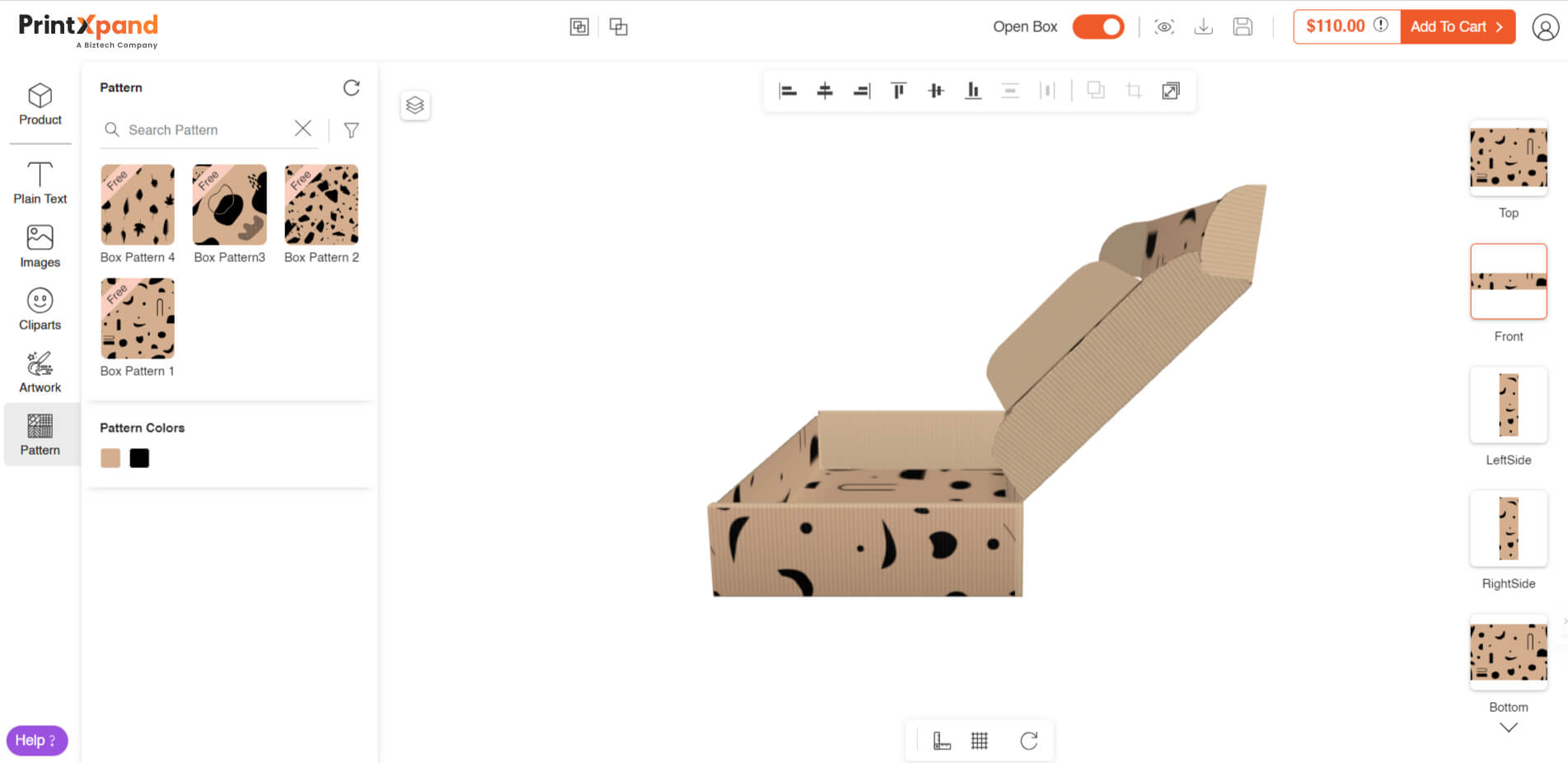
And the best part is that you don’t need to make any significant changes to your existing processes.
This cardboard box design software seamlessly integrates with your e-commerce platform, allowing customers to design on the go.
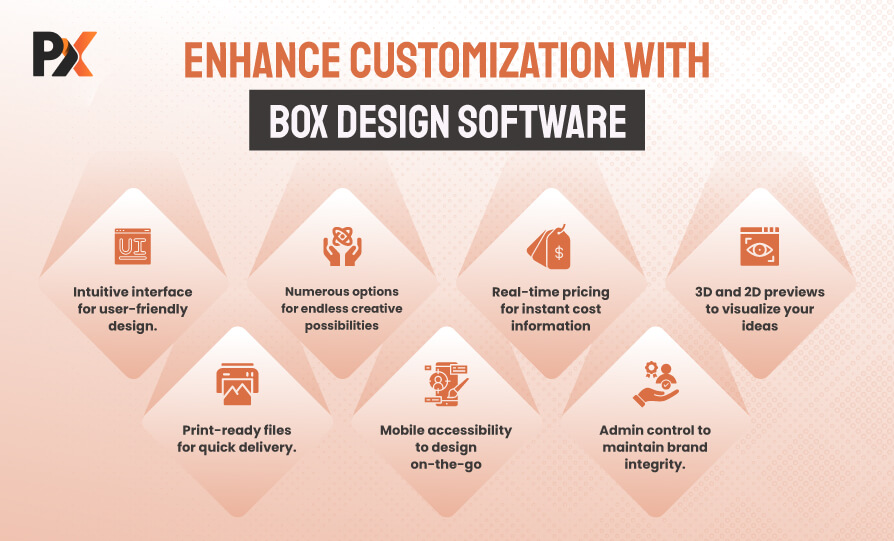
- Intuitive Interface: The cardboard box design software comes with a user-friendly interface that is easy to navigate. Your customers will have no trouble designing their boxes, even if they have limited design experience.
- Customization Options: It offers a wide range of customization options, including adding logos, text, QR codes, and images. This allows customers to create personalized and branded 3D box design online that align with their unique requirements.
- Real-time Pricing: As customers make design choices, the 3D box design software provides instant pricing information. This transparency helps customers make informed decisions and ensures they stay within their budget.
- 3D and 2D Previews: The cardboard box design software enables customers to visualize their box designs in both 3D and 2D formats. This interactive feature allows them to see a realistic representation of the final product, aiding their decision-making process.
- Print-ready Files: Once the design is finalized, the cardboard box design software generates print-ready files. These files are ready for production, eliminating the need for additional adjustments and saving valuable time.
- Mobile Accessibility: With the cardboard box design software’s mobile-friendly design, customers can easily access and design their boxes from any device, anytime and anywhere. This convenience enhances the overall customer experience and increases engagement.
- Admin Control: You can have complete control over the features and settings of the cardboard box design software. By setting design guidelines, managing user access, and enforcing design standards, you can maintain brand integrity throughout the box personalization process.
Don’t miss out on the chance to see these amazing features in action!
Enabling Personalized and Unique Box Designs: The Process with Packaging Box Design Software
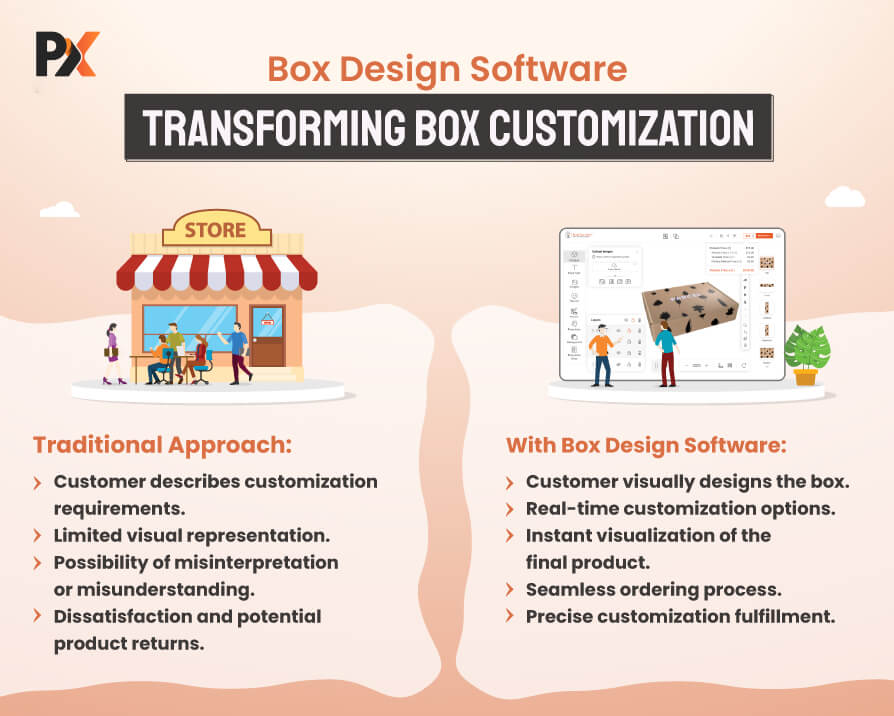
Here’s a simple step-by-step explanation of how exactly your buyers can design and order their custom boxes:
- Choose Box Type and Size:
- Customize with Ease:
- See Design Come to Life:
- Confirm and Place Order:
- Offer Seamless Printing:
Your customer selects the box type and size that best fits their needs from the available options.
They can either customize the box from scratch or use ready-made templates. To design it as per their preference, they can select their desired colors and add clipart, images, logos, fonts, QR codes, etc.
After designing, they can see a live preview of the customized design, allowing them to see exactly how it will look. The 3D box design software also calculates the pricing in real-time, ensuring transparency.
Once they’re satisfied with the design, they can simply confirm their choices and place their order. The software then generates a print-ready file, eliminating the need for further adjustments.
You receive the order, and the print-ready file is seamlessly processed for printing. This ensures that your unique design is accurately replicated on the boxes.
Benefits of Using Design Software for Your Box Customization Business
Corrugated box design software offers numerous benefits that can greatly enhance your box personalization business.
By leveraging this technology, you can streamline operations, improve efficiency, and enhance customer satisfaction.
Let’s explore these benefits in detail:
- Effortless Customization:
With carton box design software, you can easily offer box personalization and meet your customers’ specifications.
Whether selecting colors, adding logos, or incorporating unique designs, the user-friendly interface makes customization a breeze.
This enables your buyers to create visually appealing and personalized box designs that resonate with their brand.
- Quick Turnaround for Urgent Orders:
In the fast-paced business world, last-minute and urgent orders are common.
But by offering box design software online, you can efficiently handle these orders without sacrificing quality or missing deadlines.
By leveraging intuitive tools and pre-set design options, your buyers can swiftly customize boxes, and you can ensure prompt delivery, meeting the expectations of your time-sensitive customers.
- Flexible Order Quantities:
Traditional approaches often impose minimum order quantity requirements, limiting your ability to cater to customers with specific needs or budget constraints.
Design software offers the flexibility to accept and fulfill orders of any quantity.
Whether it’s a small batch or a large volume, you can accommodate diverse customer requests, expanding your customer base and driving sales growth.
- Improved Accuracy and Resource Management:
Manual errors can be costly and time-consuming.
However, the box design 3D tool reduces this risk by providing precise measurements, alignment tools, and real-time previews.
This ensures that your designs are accurate from the start, reducing rework and material waste.
By optimizing resource utilization, you can effectively manage inventory, minimize costs, and maximize profitability.
- Strengthened Collaboration and Customer Satisfaction:
Collaboration is key to delivering exceptional box personalization services.
Design software facilitates seamless collaboration among your team, customers, and suppliers.
By sharing design files and providing real-time feedback, you can streamline the collaboration process and ensure everyone is on the same page.
Moreover, the interactive and personalized customization options offered by the software enhance the customer experience.
Customers can visualize their designs in real-time, make changes, and receive instant pricing information.
This level of engagement in the box personalization process leads to greater customer satisfaction and fosters long-term loyalty.
Automate your customization and ordering processes and focus on your business growth with the Box Designer Tool.
Future Trends and Innovations in Box Customization
As the box customization industry continues to evolve, several emerging technologies and trends are shaping its future:
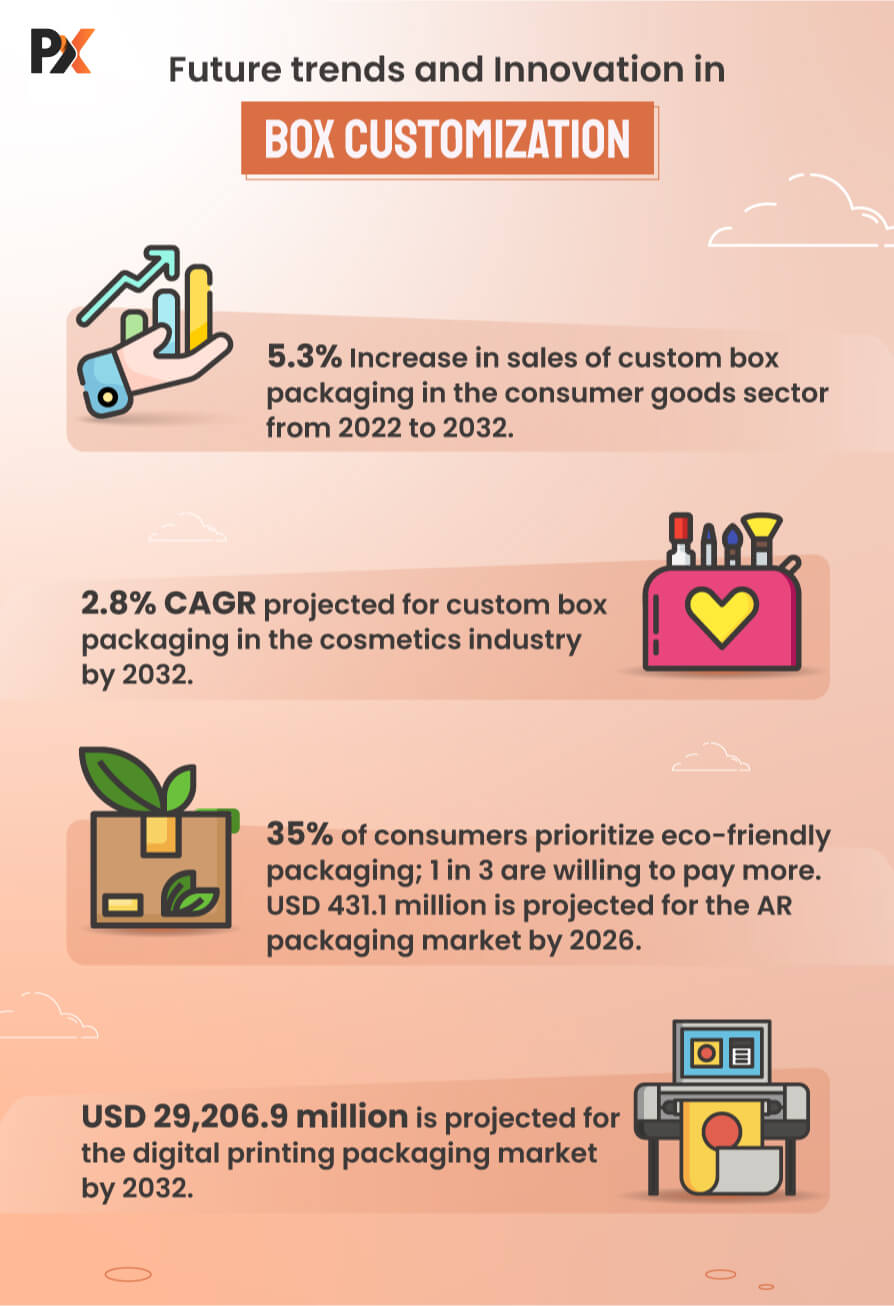
- Increased Demand in the Consumer Goods Sector:
The consumer goods sector is experiencing a significant surge in demand for customized packaging solutions.
Sales in this category are projected to increase by 5.3% between 2022 and 2032.
This demand is driven by factors such as the need for packaging in the food industry, especially for ready-to-eat products, and the rise of e-commerce businesses that require secure and visually appealing packaging for transportation.
E-commerce businesses are also prioritizing customized box packaging over generic options, as 72% of US consumers are influenced by package design.
This clearly indicates that customized packaging is surely going to stay on trend in the consumer goods industry.
- Increasing Popularity in the Cosmetics Industry
The demand for personalized and attractive cosmetic box packaging is on the rise in the luxury cosmetic sector. The market analysis of cosmetic packaging indicates that innovative and attractive packaging plays a significant role in boosting sales.
With a projected compound annual growth rate (CAGR) of 2.8% until 2032, this trend is expected to continue.
The growth of e-commerce platforms has further fueled demand as cosmetic products are increasingly sold online.
As a result, there is a growing demand for custom cosmetic box packaging.
- Growing Demand for Sustainable Packaging
The box packaging industry is witnessing a surge in demand for eco-friendly solutions, leading businesses to embrace sustainable practices.
Survey Monkey’s study revealed that one in three consumers prioritize eco-friendly options, with 35% willing to pay more for environmentally conscious products.
As a result, the demand for paper and paperboard packaging is projected to capture 51% of the custom box market share by 2032.
This is because of their biodegradability, recyclability, and lower environmental impact compared to traditional plastics.
This shift towards sustainability reflects both consumer preferences and the industry’s commitment to reducing environmental impact.
- Augmented Reality (AR) Integration:
Augmented reality is a type of smart packaging that can revolutionize the custom box packaging experience.
This technology can allow you to communicate your product details in 3D, leading to a more interactive and immersive experience for your buyers.
Many companies are already utilizing this technology, while many others are considering its implementation.
This growing adoption of AR is reflected in the projected size of the global AR packaging market, which is expected to reach nearly USD 431.1 million by 2026, with a compound annual growth rate (CAGR) of 6.5% during the forecast period.
One example is Fruit Bliss, a wholesome snack company that utilizes AR to establish an engaging connection with its customers.
Users can scan the package and unlock augmented content such as news, information, social media links, newsletter invites, and special offers.
- Additive manufacturing
Additive manufacturing, or 3D printing, has brought significant advancements to the custom box packaging industry.
This innovative approach to fabricating parts and products offers several benefits, including reduced scrap waste compared to traditional manufacturing methods.
In fact, additive manufacturing can result in 70 to 90 percent less scrap waste, making it a more sustainable and efficient option.
L’Oréal, a leading cosmetic company, recognized the potential of 3D printing in packaging.
In their 2017 Annual Report, they highlighted that 100% of their new packaging involved 3D printing. Additionally, they revealed that they had produced 14 thousand prototypes using additive manufacturing in that year alone.
This demonstrates the growing adoption of 3D technology in the packaging industry.
- Digital Printing Packaging: Enhancing Custom Box Packaging
The digital printing packaging market is projected to reach US $29,206.9 million by 2032, growing at a CAGR of 5.1% between 2022 and 2032.
The reason behind this growth is its direct file transfer capabilities (JPEG or PDF onto packaging materials) and cost and time efficiency.
It is also a sustainable choice with no harmful emissions.
Along with this, the combination of Web-to-Print and digital printing has made offering customization easier than ever before for packaging businesses.
With precise color reproduction and high-resolution prints, digital printing is transforming the packaging industry by delivering efficient, sustainable, and customizable solutions.
Also Read: How Web-to-Print Can Help Print Houses Achieve More with Less
Time to Simplify The Customization Process of Your Business
And that’s a wrap!
We’ve explored the challenges, solutions, and innovations in the world of box customization.
If you’re already in the business of selling custom boxes, you’re off to a great start!
However, offering custom boxes doesn’t have to be complicated.
You can simplify it by offering customization options, as Packlane does
Remember, your packaging quality matters, but so does keeping up with technology. It might feel overwhelming at first, but starting a business was too.
Look how well it turned out!
So, if you are looking to make an easy workflow and great customer experience your business’s best friend, a box design tool is the solution you need.
To gain a deeper understanding of how the tool works and experience it firsthand, schedule a free personalized demo at your convenience. This can provide you with all the information you need before making any investment.
Simplify customization for your customers and boost your business growth!
All product and company names are trademarks™, registered® or copyright© trademarks of their respective holders. Use of them does not imply any affiliation with or endorsement by them.
![Why Box Design Software is Essential for Your Custom Box Business [Plus Latest Industry Innovations] Why Box Design Software is Essential for Your Custom Box Business [Plus Latest Industry Innovations]](https://www.printxpand.com/wp-content/uploads/2023/08/Overcoming-Feature-Image-40364.jpg)

